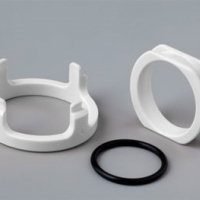
Medical circumcisions are among the most common surgical procedures performed in males. The usual indications are phimosis (inability to completely retract the foreskin and expose the glans due to a congenital or acquired constriction of the prepuce), paraphimosis (when the foreskin is not pulled back over the glans after retraction resulting in a tight constricting band which causes swelling of the distal penis and acute discomfort), balanoposthitis (erythema and edema of the prepuce and glans) and balanitis (inflammation is confined to the glans; the foreskin is usually non?retractile). Circumcision devices have been developed to shorten the operative time, simplify techniques, and improve safety and cosmetic outcomes. The devices generally aim to crush the foreskin while simultaneously creating hemostasis, the foreskin is then excised or allowed to slough off. Their use is supposedly safer and easier to replicate than the standard dissection techniques. There are at least 20 devices for male circumcision on the market, yet their effectiveness has not been reviewed to date. Read the review
